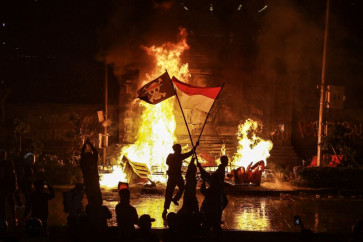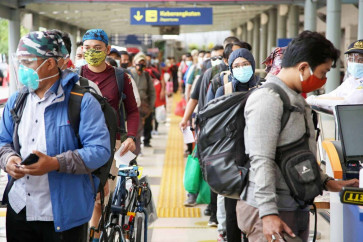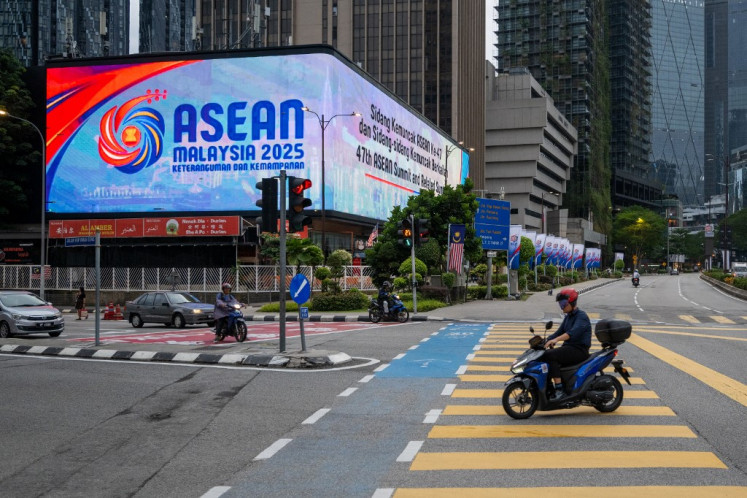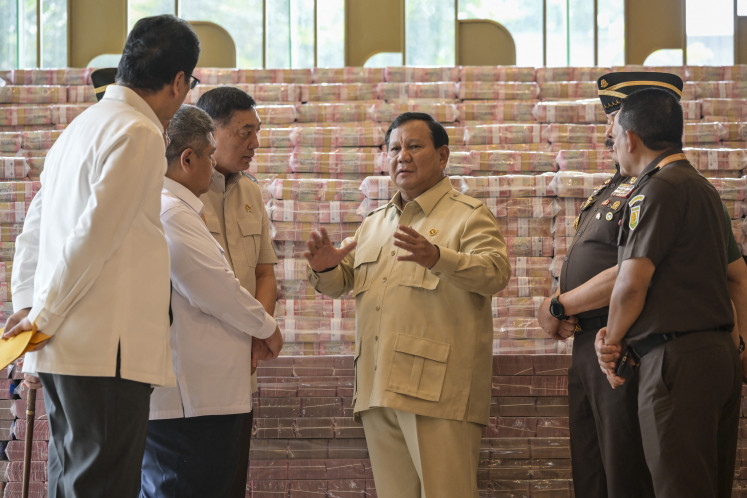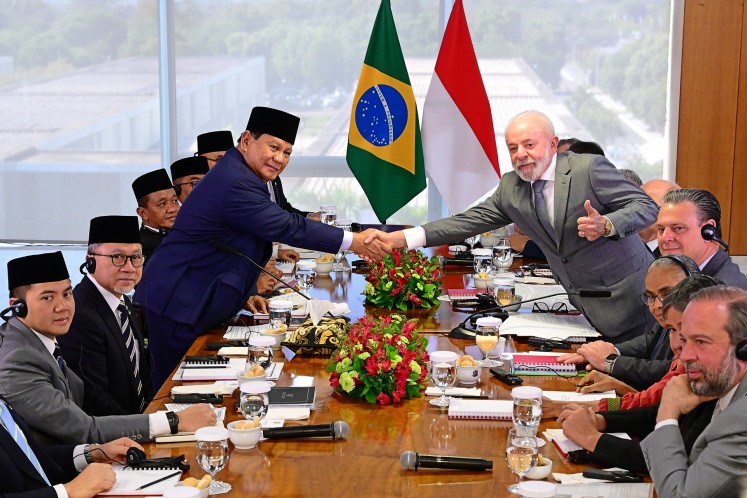Popular Reads
Top Results
Can't find what you're looking for?
View all search resultsPopular Reads
Top Results
Can't find what you're looking for?
View all search resultsExperts reprimand city's approval of six toll roads
Experts have strongly objected to a decision made by the city administration to proceed with the long-stalled and controversial construction of six inner-city toll roads
Change text size
Gift Premium Articles
to Anyone
E
xperts have strongly objected to a decision made by the city administration to proceed with the long-stalled and controversial construction of six inner-city toll roads.
Urbanist Elisa Sutanudjaja said that she felt cheated upon learning that construction would commence. 'I thought the project was cancelled after many people opposed it in 2012,' she said.
Elisa, who has followed the development of the project since it was initiated by then governor Sutiyoso in 2007, said the toll roads would not ease the traffic congestion that had worsened in recent years as new social and environmental problems would arise..
'Ninety-five percent of the [proposed toll] roads will be elevated, so the houses, offices and commercial areas under the road will be affected,' she said.
Elisa also pointed out that the construction of the 69.7-kilometer toll road project, which would cost some Rp 42 trillion (US$3.6 billion), would also affect thousands of families because the roads would pass through densely populated areas.
The first phase of construction plan, for example, would connect Semanan, West Jakarta, to Sunter, North Jakarta, affecting 19 subdistricts.
The city administration, the Toll Road Regulatory Agency (BPJT) and the consortium, PT Jakarta Tollroad Development (JTD), signed a joint agreement to initiate the project in July. The signing was witnessed by Jakarta Deputy Governor Basuki 'Ahok' Tjahaja Purnama.
The physical construction of the inner-city toll roads, meanwhile, would begin in 2015, with roads expected to become operational by 2022. They have been designed to connect all five Jakarta municipalities.
The first phase of the construction would also include a 9.4-km road from Sunter to Pulogebang, East Jakarta.
Routes from Duri Pulo, Central Jakarta, to Kampung Melayu, East Jakarta, and from Kampung Melayu to Kemayoran, Central Jakarta, were planned for the second phase.
The third phase of the project would connect Ulujami, South Jakarta, to Tanah Abang, Central Jakarta, while the fourth would connect Pasar Minggu, South Jakarta, with the Casablanca area of South Jakarta.
Ahok has proposed that the roads be built simultaneously.
According to the Rujak Center for Urban Studies, many sections of the inner-city toll road would overlap and intersect with other public facilities like roads and railway stations.
One of the toll roads, for example, would pass Jl. Gajah Mada in Central Jakarta and rise over Jl. Zainul Arifin beside the Gajah Mada Plaza. The width of Jl. Zainul Arifin is only 15 meters, while the proposed toll road would have a width of 25 meters.
Urban expert Yayat Supriyatna said the toll road construction was actually in violation of the 2012 Spatial Planning bylaw.
According to Article 29 of the bylaw, toll roads can be built only if several conditions are fulfilled.
These conditions include; optimal operation of 12-corridor Transjakarta buses and their feeders; a well-prepared traffic management strategy at each location; and a preparation plan for integrating toll roads with adjacent public transportation.
Yayat said that he questioned the intention of the city administration and the central government to tackle the traffic issue in the city.
He added that roads would only be enjoyed by 10 to 20 percent of the middle-class who could afford to pay for the tolls.
'Meanwhile, millions of others will continue to struggle with public transportation, whose condition has not significantly changed over the years,' he said.
Yayat added that the problem could be also addressed by constructing regular roads.
'The city administration is more than capable of building its own elevated road, which would cost only around Rp 4 trillion,' he said.
Yayat said building the toll road would only put common people at a greater disadvantage. 'Residents will be suffering during the construction as the congestion will get worse. After that, they will have to spend money to enjoy the new facilities,' he said.
'Meanwhile, it will not ease the congestion,' he added.
The plan was widely resisted by urban planners, activists and netizens in early 2013 and at least 4,000 people signed petition demanding that the city administration cancel the plan. After failing to reach an agreement in discussions with stakeholders, Governor Joko 'Jokowi' Widodo said he would consider building just two of the six planned elevated extensions of the inner-city toll road.
Those two routes would connect Semanan to Sunter and Sunter to Bekasi.
However, the Jokowi administration has failed to revise the toll-road plan in the city administration's Medium Term Development Plan bylaw.


